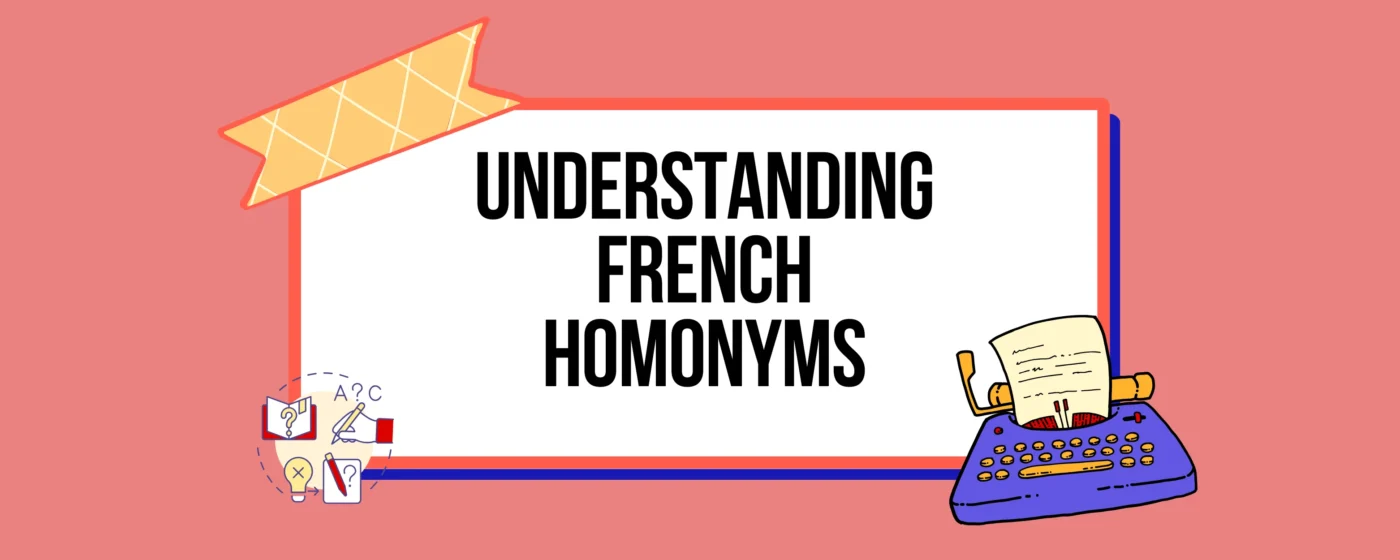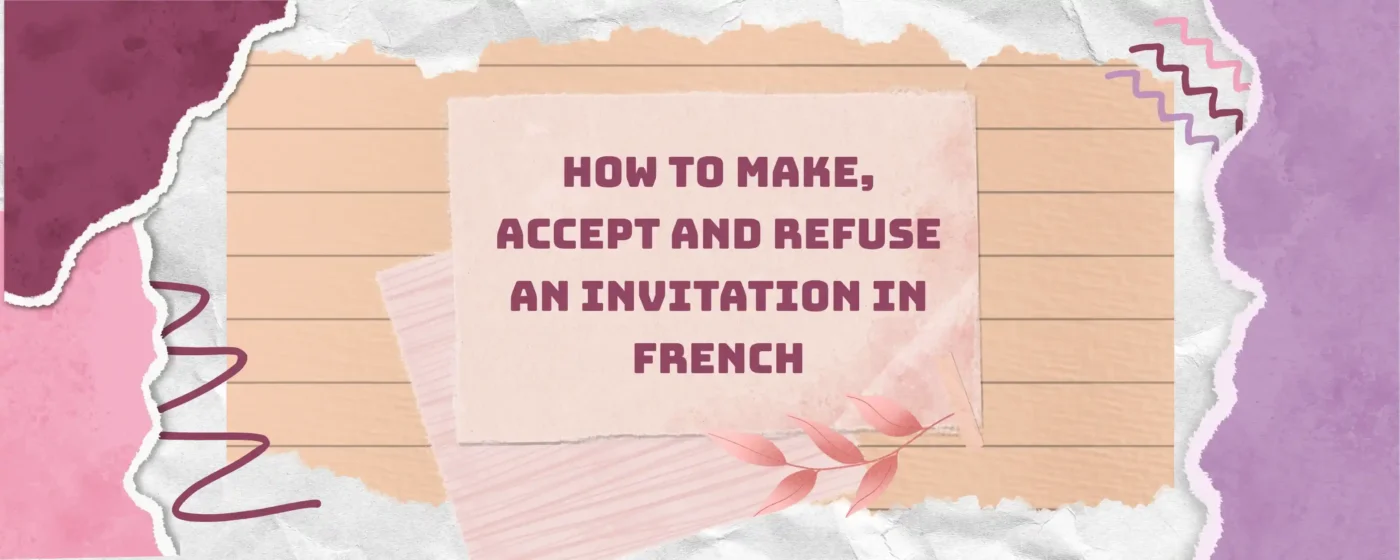Homonyms can be tricky, especially in a language like French. These are words that sound the same or are spelled the same but have different meanings. Understanding homonyms is crucial for mastering the French language, as they are common in daily conversations. In this article, we will explore some of the most confusing yet fascinating French homonyms to help you navigate them with ease. By the end, you’ll have a clear understanding of how to use these words correctly in different contexts, making your French communication more effective.
What Exactly Are French Homonyms?
Homonyms are words that either sound the same or are spelled the same but have different meanings. In French, these can be especially confusing because of the language’s rich vocabulary and pronunciation variations. For example, the word “mer”(sea) and “mère” (mother) sound exactly the same but mean entirely different things. This is where homonyms differ from homophones and homographs. Homophones sound alike, while homographs are spelled the same.
In everyday French, homonyms are everywhere. They make the language vibrant but also challenging. Imagine a conversation where “vers” could mean “towards”, “worms”, or “verses”, depending on the context! Mastering French homonyms is essential for both learners and native speakers to avoid misunderstanding and communicate effectively.
The significance of French homonyms in everyday French cannot be overstated. These are present in various forms of communication, from casual conversation to literature and media. They enrich the language by providing multiple layers of meaning, often requiring listeners or readers to pay close attention to the context to grasp the intended message.

Did You Know ?
In French, the words for “glass,” “green,” “worm,” and “towards” are all homonyms! So if you say, ‘Le ver vert va vers le verre vert…’ You’re really saying, ‘The green worm is going towards the green glass. Here is one more example, so if you say “Si mon tonton tond ton ton tonton, ton tonton sera tondu” which means — “If my uncle shaves your uncle, your uncle will be shaved.”
Common French Homonyms You Need To Know
Below is a list of frequently used French homonyms, each with two different meanings. With this table, understand how each word can have more than one interpretation, depending on its usage.
| Word 1 | Definition | Example Sentence | Word 2 | Definition | Example Sentence |
|---|---|---|---|---|---|
| Le livre | book | Le livre est sur la table. | Livre | Pound(currency) | Cet article coûte cinq livres. |
| La fête | party | La fete etait animee. | Fete | Saint’s day | On célèbre sa fête aujourd’hui. |
| Le mot | Word | Il a dit un mot gentil. | Mot | motto | Le mot d’ordre de l’école est inspirant. |
| Le poele | Stove | Le poêle est dans la cuisine. | Poele | Frying pan | J’ai fait cuire des œufs dans la poêle. |
| Le tour | Tour | Nous avons fait un tour de la ville. | Tour | Turn | C’est ton tour de parler. |
| Le point | Dot | Mets un point sur le papier. | Point | Point | Il fait un bon point. |
| Le fils | Son | Mon fils a cinq ans. | Fils | thread | Le fil est solide. |
| Le voile | veil | Elle portait un voile blanc. | veil | Sail | La voile du bateau était grande. |
| La moule | Mussel | J’ai mangé des moules au dîner. | Moule | Mould | Le moule à gâteau était propre. |
| Le manche | Handle | Le manche s’est cassé. | Manche | Sleeve | La manche est déchirée. |

These examples demonstrate how the same word can have different meanings based on context, making it essential to pay attention to how these words are used in sentences. Try to use these words in your conversations or writing to solidify your knowledge.
Encountering these homonyms in real-life contexts, such as reading French newspapers, literature, or listening to French podcasts, will help reinforce your learning and make these words a natural part of your vocabulary. Learning these common homonyms will significantly improve your understanding and use of everyday French, whether you’re listening to conversations, reading texts or engaging in writing.
Lost for Words? We’ve Got You!
Sign up for our courses and let our expert teachers boost your vocabulary effortlessly!
Advanced French Homonyms To Test Your Skills
Once you have mastered the basics, you can challenge yourself with more advanced homonyms. These words might be less common, but understanding them will greatly enhance your French language skills. Advanced homonyms often appear in more formal or literary contexts, making them a valuable asset for higher-level French studies or professional communication.
| Word 1 | Definition | Example Sentence | Word 2 | Definition | Example Sentence |
|---|---|---|---|---|---|
| Le parti | Political Party | Il appartient à un parti politique. | Parti | Part | Il à pris part à la discussion. |
| Le canon | Cannon | Le canon a été utilisé pendant la bataille. | Canon | Canon(rule) | L’église suit ce canon. |
| Le banc | bench | Nous nous sommes assis sur le banc du parc. | Banc | Bank(of fish) | Un banc de poissons est passé. |
| Le pêche | sin | Il à Parlé du péché dans un contexte religieux. | Pêche | peach | J’ai mangé une pêche mûre. |
These advanced homonyms will test your understanding and encourage you to explore the French language further. exploring these homonyms can enhance your appreciation for the French language’s complexity and beauty. Try to use these words in your conversations or writing to solidify your knowledge. Encountering these homonyms in real-life contexts, such as reading French newspapers, literature, or listening to French podcasts, will help reinforce your learning and make these words a natural part of your vocabulary.
As you become more comfortable with these words, you’ll find that your ability to understand and engage with native speakers improves significantly. Mastering advanced homonyms can also prepare you for higher-level exams, such as the DELF and DALF, which often test these nuanced aspects of the language.Try using these words in conversations to strengthen your knowledge.
How Context Helps In Deciphering French Homonyms?
Understanding the context is vital when deciphering homonyms in French. The meaning of a homonym often depends entirely on surrounding words and the situation. For example, if someone says, “Il a casse le manche,” without context, you wouldn’t know whether they broke a handle or a sleeve. However, if they are holding a broom, it’s clear that they mean the handle.
Context not only helps clarify the meaning but also deepens your understanding of French. By paying attention to the words around a homonym and the overall conversation, you can accurately determine its meaning, making communication smoother and more precise.
Furthermore, context can include cultural references, historical backgrounds, or even common idiomatic expressions. For example, in French literature and poetry, homonyms are often used intentionally to create double meanings and add layers of interpretation. By familiarizing yourself with these words, you’ll not only understand the language better, but also appreciate its artistic and cultural richness.
Understanding French homophones can be challenging, but our Guide to French Homophones provides clear explanations to improve your language skills.
Conclusion
Mastering French homonyms is an important step in becoming fluent in the language. Although they can be confusing at first, with practice and attention to context, you can learn to use them accurately.Learning homonyms is not just about memorising words, it’s about developing a deeper understanding of the language’s structure and cultural nuances.
As you continue to study French, remember that encountering challenges like homonyms is a natural part of the learning process. Embrace these challenges as opportunities to grow and enhance your skills. Keep practicing, and you’ll soon find that these challenging words become easier to manage. Bonne Chance!
Frequently Asked Questions
1. Why do French have so many homonyms ?
Ans: French has a rich history, with influences from Latin, Germanic languages, and more. This diverse linguistic background has contributed to the development of homonyms. Additionally, the evolution of spoken and written French has led to variations in pronunciation and spelling further contributing to the presence of homonyms.
2. How many different words are there in French ?
Ans: French is estimated to have over 100,000 words in common usage, with many more in specialised fields. The existence of homonyms adds to the richness and complexity of the language, making it both fascinating and challenging for learners.
If you’re interested in learning more or taking an offline class visit La Fôret French Class.





